Decor
What Is Considered Low Voltage in a Home?
2025
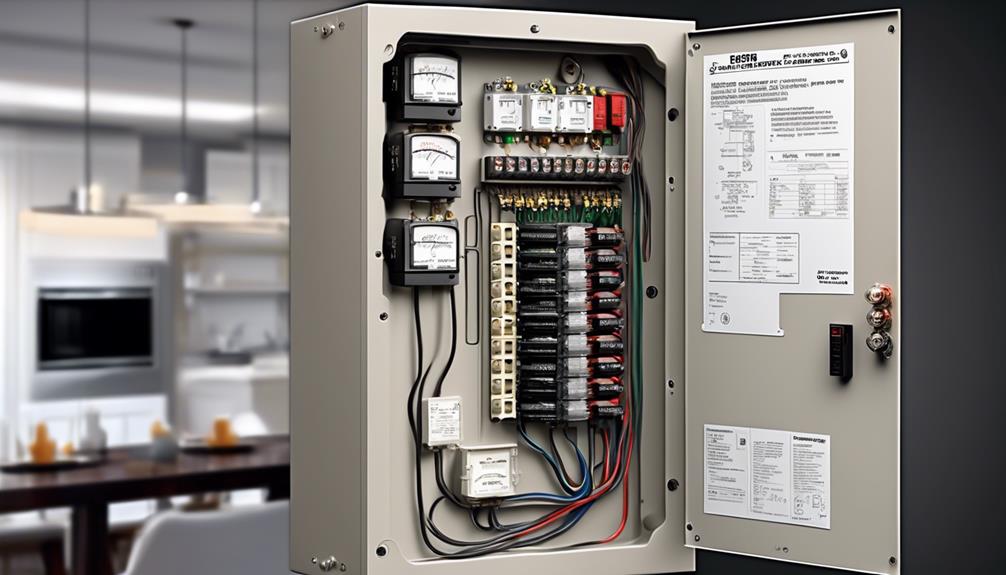
As homeowners, we frequently face the puzzle of electrical voltage. Grasping the concept of what constitutes low voltage in a residence is essential for upholding a secure and effective electrical system.
Low voltage, typically defined as anything below 50 volts, can cause issues with appliances, lighting, and overall power quality. It's essential to grasp the impacts of low voltage on our electrical systems to prevent potential hazards and malfunctions.
By delving into the basics of low voltage and differentiating it from standard voltage, we can ensure the proper functioning of our home's electrical infrastructure. Professional inspection and troubleshooting play key roles in identifying and rectifying low voltage issues, ultimately contributing to a safer and more reliable living environment.
Key Takeaways
- Fluctuations in voltage can occur due to weather conditions, aging infrastructure, or electrical overloads.
- Low voltage can lead to safety concerns and performance issues with appliances.
- Low voltage wiring reduces the risk of electrical accidents and damage to devices.
- Troubleshooting techniques for low voltage issues include checking the power source, assessing wiring and connections, inspecting outlets and switches, using a voltage meter, and pinpointing the root cause of the problem.
Understanding Voltage Levels
Understanding voltage levels is crucial for ensuring the safe and efficient operation of electrical systems in a home. Voltage regulations dictate the acceptable range of voltage for different electrical components. It's essential to understand these regulations to prevent damage to appliances and ensure the safety of the household.
Regular electrical maintenance is necessary to monitor and regulate voltage levels, as fluctuations can occur due to various factors such as weather conditions, aging infrastructure, or electrical overloads. As homeowners, we must be proactive in maintaining the electrical systems in our homes to prevent low voltage situations that can lead to inefficient operation of appliances or even potential safety hazards.
Importance of Voltage Knowledge
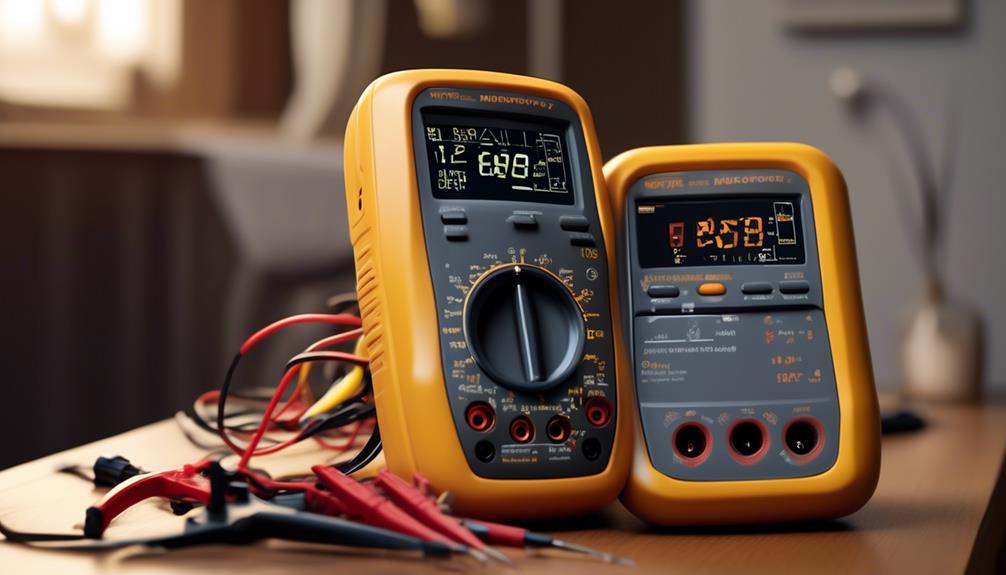
Understanding voltage levels is crucial for our safety and the proper functioning of our electrical systems. By knowing the voltage requirements of our appliances, we can ensure they operate efficiently and avoid potential damage.
Additionally, being aware of voltage safety tips can prevent hazardous situations and protect both our appliances and our homes.
Voltage Safety Tips
How can we ensure that we've the necessary knowledge to maintain voltage safety in our homes?
Voltage safety is paramount in avoiding electrical hazards. To ensure a safe electrical environment, always use insulated tools when working on electrical circuits, and never touch bare wires. It's essential to understand the voltage requirements of electrical appliances and use surge protectors to safeguard sensitive equipment. Regularly inspect electrical cords and replace any that are frayed or damaged.
Additionally, installing ground fault circuit interrupters (GFCIs) in areas where water is present can prevent electric shock. Familiarize ourselves with the location of the circuit breaker or fuse box and know how to safely reset a tripped circuit.
Understanding Electrical Systems
With a solid grasp of voltage knowledge, we can effectively navigate and maintain our home's electrical systems to ensure safety and functionality. Understanding electrical systems is crucial for electrical safety and proper voltage regulation. Here are key points to consider:
- Safety Measures: It's essential to comprehend the potential hazards associated with electrical systems and the precautions needed to mitigate them. This includes knowledge of proper grounding, insulation, and the use of circuit breakers.
- Voltage Regulation: A clear understanding of voltage regulation ensures that electrical appliances and devices function optimally without the risk of damage due to overvoltage or undervoltage. This involves knowledge of voltage fluctuation patterns and the use of voltage regulators or stabilizers when necessary.
- Maintenance Practices: Acquiring knowledge about electrical systems enables us to undertake preventive maintenance effectively, ensuring the longevity and reliability of our home's electrical infrastructure.
Importance in Appliances
Navigating our home's electrical systems with a solid grasp of voltage knowledge is crucial to understanding the importance of proper voltage regulation in appliances. When we're well-versed in voltage, we can ensure that our appliances operate at their optimal efficiency.
Understanding the voltage requirements of different appliances allows us to select the right voltage regulators and surge protectors, thereby safeguarding our appliances from potential damage due to voltage fluctuations.
Moreover, being aware of the voltage needs of our appliances helps us in ensuring our safety and that of our family members. This knowledge empowers us to make informed decisions about using appliances, minimizing the risk of electrical hazards.
Ultimately, a comprehensive understanding of voltage's impact on appliance efficiency and safety concerns is indispensable for maintaining a secure and efficient home environment.
Low Voltage Basics
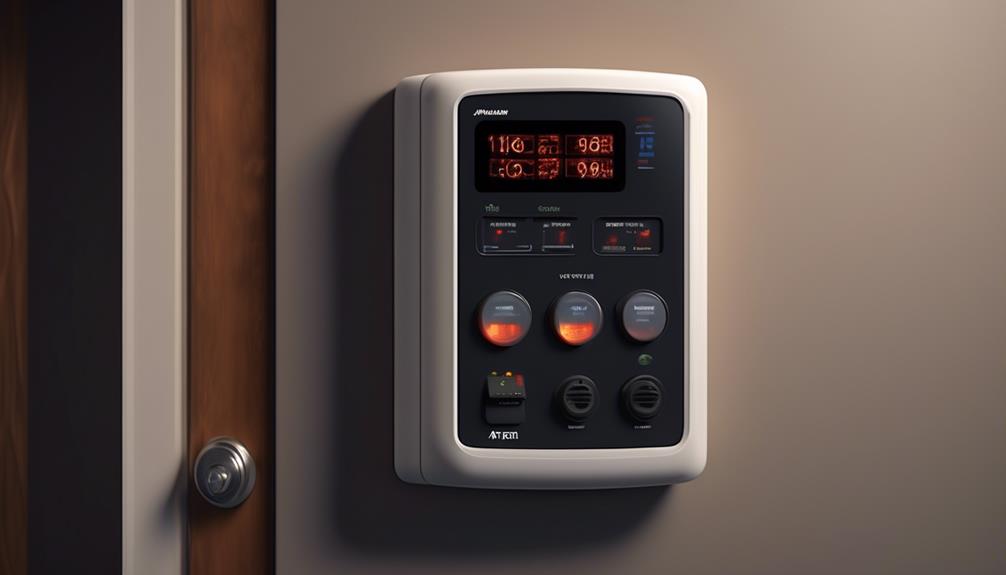
Understanding the fundamentals of low voltage is essential for ensuring the safety and efficiency of electrical systems in a home. When it comes to low voltage basics, there are key aspects to consider:
- Low Voltage Wiring
Utilizing low voltage wiring is crucial for transmitting electricity safely and efficiently throughout a home. These specialized wires are designed to handle lower voltage levels, reducing the risk of electrical accidents and damage to connected devices.
- Voltage Regulation Techniques
Implementing effective voltage regulation techniques is paramount for maintaining stable and consistent low voltage levels within a home's electrical system. Techniques such as voltage regulators and transformers help control and adjust voltage to ensure it remains within the desired range, preventing potential damage to sensitive electronic equipment.
- Safety Protocols
Adhering to proper safety protocols is imperative when working with low voltage systems. This includes following industry standards for installation, maintenance, and troubleshooting to minimize the risk of electrical hazards and ensure the overall safety of the home.
Mastering the basics of low voltage, including low voltage wiring and voltage regulation techniques, is essential for homeowners and professionals alike to ensure the proper functioning and safety of electrical systems within a home.
Low Voltage Vs. Standard Voltage
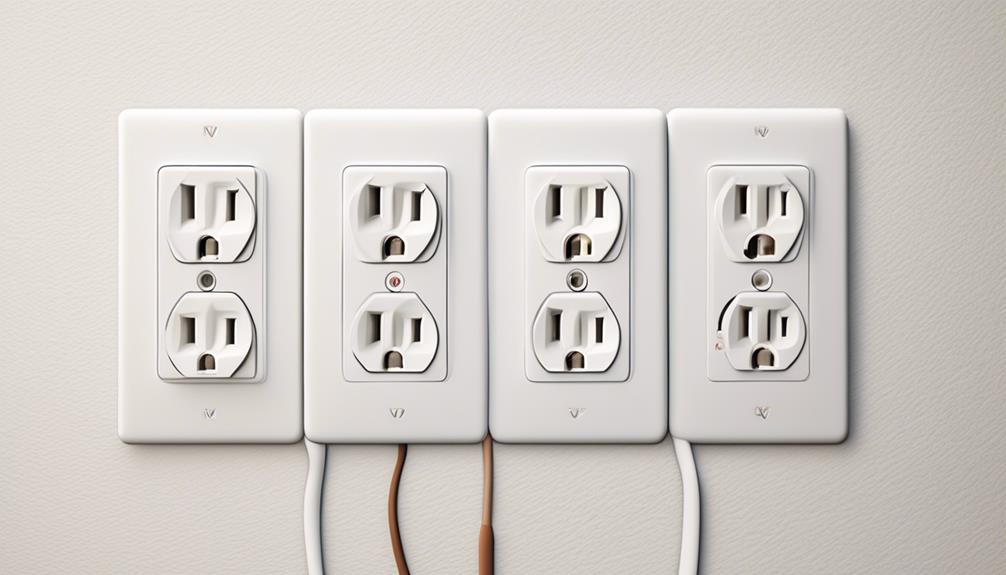
Comparing low voltage to standard voltage reveals significant differences in electrical performance and safety considerations. Low voltage applications typically operate at 50 volts or less, while standard voltage systems run at 120 volts or higher. The table below provides a concise comparison of key factors between low voltage and standard voltage systems.
| Aspect | Low Voltage System | Standard Voltage System |
|---|---|---|
| Electrical Safety | Reduced risk of electrical shock | Higher risk of severe electrical shock |
| Power Consumption | Lower power consumption, leading to energy savings | Higher power consumption, potentially more expensive |
| Cable Size | Thinner and more flexible cables | Thicker and less flexible cables |
| Voltage Conversion Solutions | Often require voltage conversion solutions | Generally do not require voltage conversion solutions |
| Compatibility | Limited compatibility with standard appliances | Compatible with most standard appliances |
Understanding the differences between low voltage and standard voltage systems is crucial when considering the electrical needs of a home. Low voltage applications offer energy efficiency and reduced safety risks but may require voltage conversion solutions for compatibility with standard appliances. On the other hand, standard voltage systems are more common and do not typically require voltage conversion solutions, but they come with higher energy consumption and safety considerations.
Impact on Electrical Systems
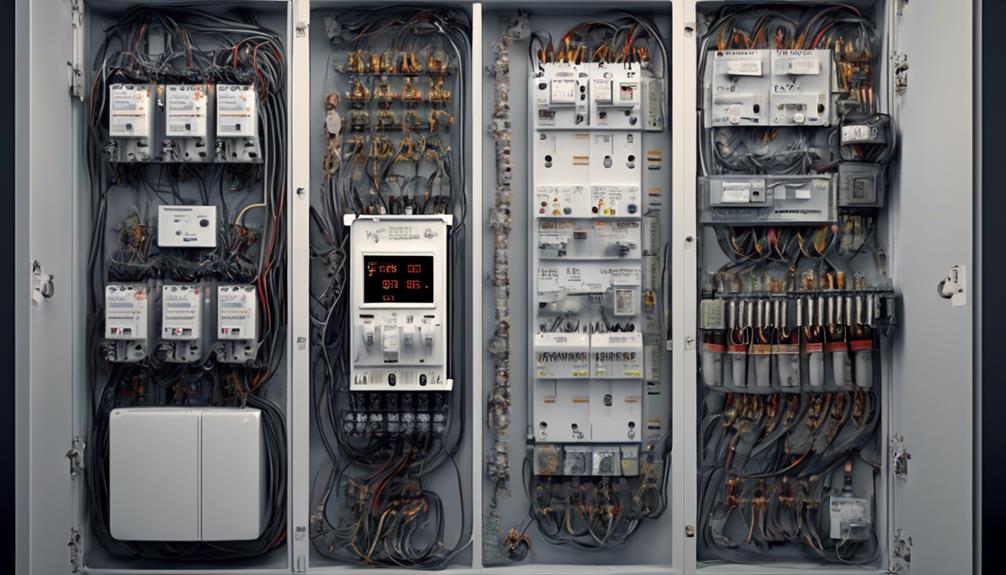
Shifting our focus to the impact on electrical systems, we can observe how the differences between low voltage and standard voltage systems affect the overall performance and safety of a home. When considering the impact on electrical systems, it's essential to recognize the following key points:
- Electrical System Efficiency:
- Low voltage systems often require larger wire sizes to compensate for power loss over longer distances, potentially leading to increased installation costs.
- Standard voltage systems, on the other hand, can efficiently transmit power over longer distances without significant power loss, contributing to overall energy efficiency.
- Voltage Regulation:
- Low voltage systems may experience voltage drops, which can affect the performance of sensitive equipment and devices.
- Standard voltage systems provide more stable voltage regulation, ensuring consistent and reliable power supply to electrical components and appliances.
- Impact on Home Automation, Smart Devices:
- Low voltage systems may struggle to power advanced home automation and smart devices, limiting their functionality.
- Standard voltage systems can adequately support a wide range of home automation and smart devices, enabling seamless integration and optimal performance.
Understanding these nuances in electrical system efficiency and its impact on home automation and smart devices is crucial for homeowners seeking to create a safe and technologically advanced living environment.
Identifying Low Voltage Signs
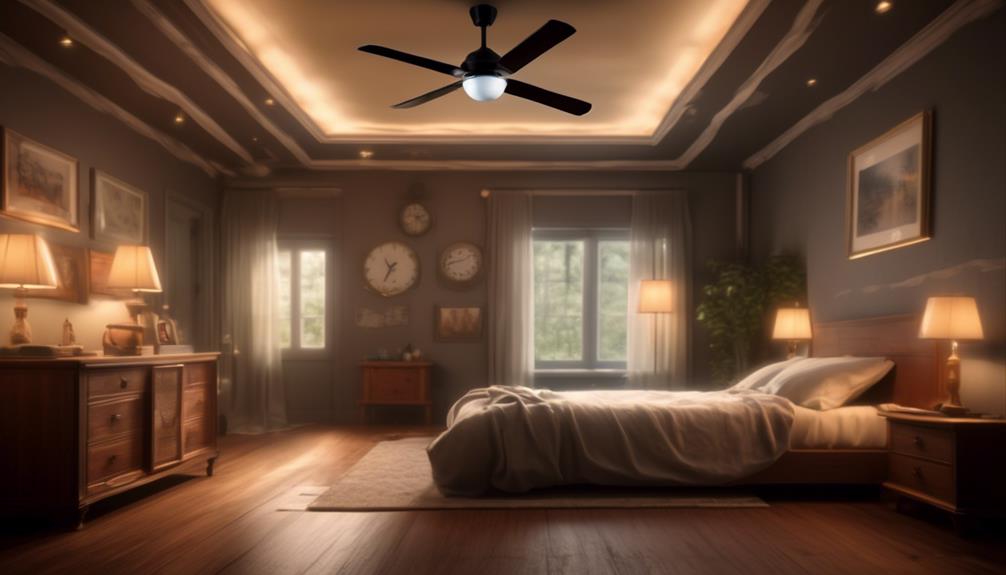
We can identify signs of low voltage in a home by observing the dimming of lights and the slow performance of electrical appliances. Low voltage indicators, such as flickering or dimming lights, are common signs of inadequate voltage reaching the fixtures. Additionally, when electrical appliances like motors, refrigerators, or air conditioners operate slower than usual, it can be a signal of low voltage.
Understanding voltage drops is crucial in recognizing low voltage signs. Voltage regulation is essential for maintaining a consistent and adequate supply of power to all electrical devices. Troubleshooting techniques involve checking the main electrical panel for tripped breakers or blown fuses, as these can cause low voltage issues. It's also important to inspect the wiring and connections for any signs of damage or corrosion that could lead to voltage drops.
Effects on Lighting
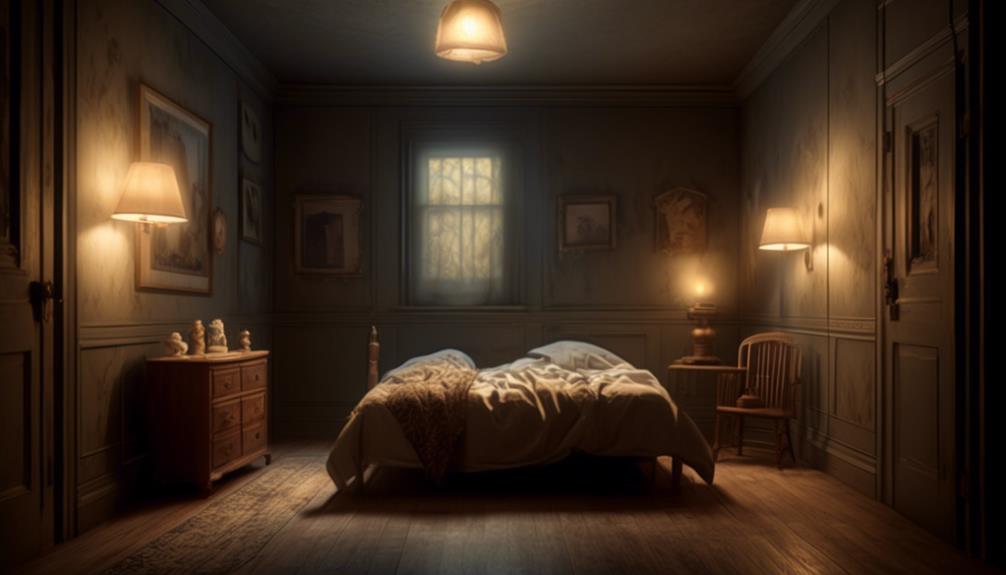
When low voltage affects lighting, it can result in dim or flickering bulbs, impacting the overall brightness and quality of illumination in the home. This can have several implications for lighting performance:
- Reduced Visibility: Dim lighting due to low voltage can make it difficult to see and navigate spaces within the home, impacting daily activities and potentially compromising safety.
- Flickering Bulbs: Low voltage can cause bulbs to flicker, creating a distracting and unpleasant environment that hinders productivity and comfort.
- Impact on Electronics: Low voltage not only affects the performance of lighting fixtures but can also have a detrimental impact on electronic devices such as dimmer switches, smart bulbs, and LED lights, potentially leading to malfunctions or premature failure.
It is essential to address low voltage issues promptly to ensure optimal lighting performance and to prevent any potential damage to electronics. Seeking professional assistance to assess and rectify low voltage situations can help maintain a well-lit and functional living environment.
Appliances and Low Voltage
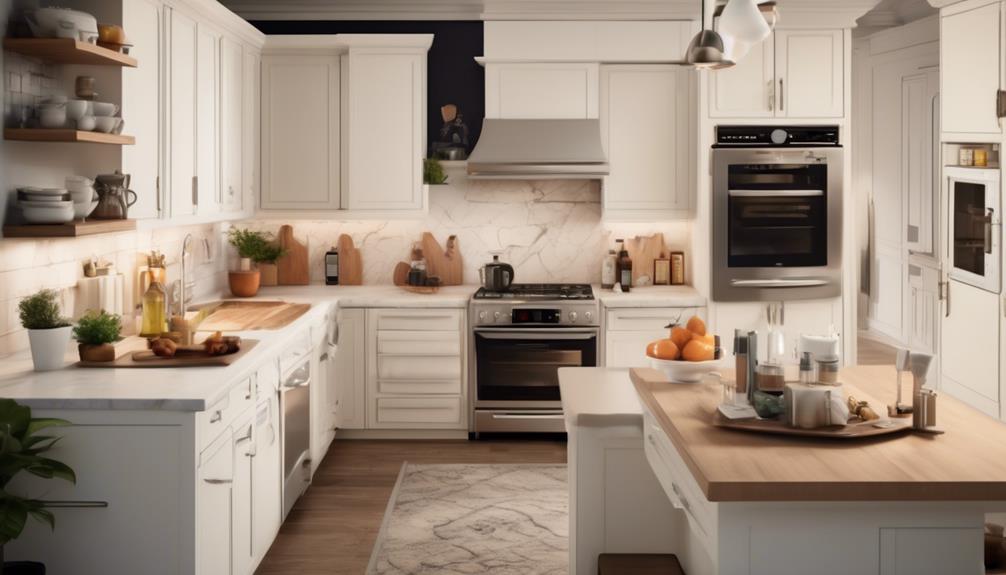
We've all experienced the frustration of appliances not working properly, and low voltage could be to blame. Appliances rely on a consistent voltage supply to function safely and efficiently, and low voltage can pose safety concerns and lead to performance issues.
Understanding the voltage requirements for our appliances is crucial to ensuring they operate as intended and last longer.
Appliance Safety Concerns
Appliances operating at low voltage can experience reduced efficiency and potential safety hazards. It's crucial to understand the impact of low voltage on appliance safety and performance.
When dealing with voltage fluctuations, proper appliance maintenance becomes even more critical. Here are some key points to consider:
- Regular appliance maintenance helps identify and address potential issues caused by low voltage, ensuring safe and efficient operation.
- Inspecting power cords and plugs for any signs of damage or wear is essential in preventing electrical hazards.
- Utilizing voltage stabilizers or surge protectors can safeguard appliances from damage due to low voltage, extending their lifespan and reducing safety risks.
Voltage Requirements for Appliances
Considering the voltage requirements for appliances in relation to low voltage, it's essential to assess their compatibility with fluctuating power sources. Appliance compatibility with varying voltages is crucial to ensure optimal performance and longevity. Voltage fluctuations can occur due to various factors such as power grid issues or electrical system instabilities.
It's important to check the voltage specifications of appliances to ensure they can operate efficiently within the available voltage range. Appliances designed for specific voltage levels may experience malfunctions or reduced lifespan when subjected to voltage fluctuations outside their designated range. Therefore, it's advisable to use voltage stabilizers or surge protectors to mitigate potential damage caused by voltage fluctuations and safeguard the appliances.
Understanding appliance compatibility and managing voltage fluctuations is imperative for maintaining the functionality and durability of household appliances.
Impact on Appliance Performance
After conducting voltage specifications for our appliances, we noticed a significant impact on their performance when exposed to low voltage levels. This has led us to understand the criticality of voltage optimization for appliance performance.
We found that:
- Low voltage can cause appliances to operate inefficiently, leading to increased energy consumption and reduced effectiveness.
- Sensitive electronic components within appliances can be damaged by low voltage, impacting their overall lifespan and reliability.
- Consistent exposure to low voltage can result in malfunctions and premature failure of appliances, leading to costly repairs or replacements.
Understanding the impact of low voltage on appliance performance emphasizes the importance of maintaining optimal voltage levels in a home. Proper voltage optimization not only ensures better performance but also extends the lifespan of appliances, ultimately saving on costs and enhancing overall efficiency.
Safety Considerations
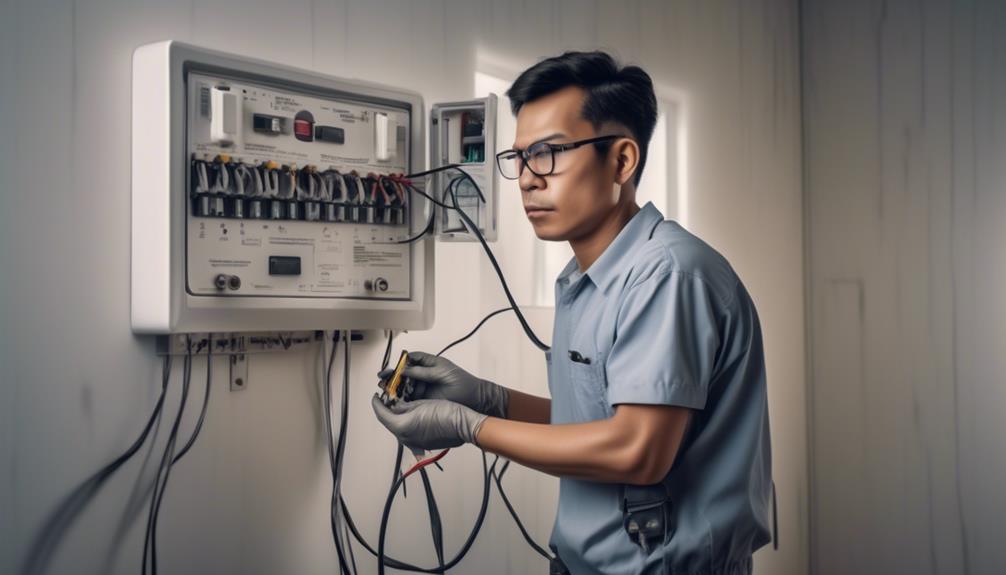
Ensuring the safety of the household is paramount when addressing low voltage issues in a home. Electrical hazards can arise when dealing with low voltage, and it's crucial to take appropriate safety precautions. Exposed wiring or damaged insulation can pose serious risks, leading to electrical shocks or even fires. Therefore, regular inspections of the electrical system should be conducted to identify any potential hazards. Safety precautions such as using ground fault circuit interrupters (GFCIs) and ensuring that all electrical work is performed by qualified professionals can greatly minimize these risks.
It's important to be vigilant about the warning signs of electrical hazards, including flickering lights, frequent tripping of circuit breakers, or unusual heat emanating from outlets or appliances. Any such signs should prompt immediate investigation and remedial action.
Furthermore, it's advisable to educate all household members about electrical safety, emphasizing the importance of never overloading outlets or using damaged electrical cords. By being proactive and attentive to electrical safety, the risks associated with low voltage can be significantly mitigated, ensuring a secure and hazard-free home environment.
Wiring and Low Voltage

When dealing with low voltage issues, assessing the wiring is essential to identify potential causes and solutions. Proper wiring standards play a significant role in maintaining consistent voltage levels throughout a home. To ensure optimal performance and safety, it's crucial to consider the following:
- Quality of Wiring: Up-to-date wiring standards, such as the National Electrical Code (NEC) in the US or similar regulations in other regions, should be followed during installation or renovations. Using high-quality wiring materials and ensuring proper insulation can help prevent voltage fluctuations and minimize the risk of low voltage issues.
- Proper Grounding: Adequate grounding is essential to maintain stable voltage levels and prevent electrical hazards. Checking the grounding system regularly and ensuring its compliance with the relevant standards is crucial for mitigating low voltage issues.
- Regular Inspections: Periodic inspections by qualified electricians can detect potential wiring issues that may lead to voltage fluctuations. Addressing any identified problems promptly can help maintain a stable and safe electrical system within the home.
Voltage Regulation Solutions

To regulate voltage effectively, we prioritize employing reliable and efficient solutions in our home's electrical system. There are several voltage regulation methods and stability solutions that can be implemented to maintain a consistent voltage supply.
One common solution is the use of voltage regulators, which automatically adjust the voltage to a specified level, ensuring stability and protection for sensitive electrical equipment.
Additionally, installing power conditioners can help to smooth out fluctuations in voltage, providing a more consistent and reliable power supply to our home.
Another effective method is the utilization of voltage stabilizers, which work to maintain a steady voltage output despite fluctuations in the input voltage.
Furthermore, incorporating surge protectors into our electrical system can safeguard against sudden spikes in voltage, preventing damage to our appliances and devices.
Professional Inspection Benefits

After implementing effective voltage regulation solutions in our home's electrical system, a professional inspection can further ensure the safety and efficiency of our electrical equipment. When it comes to electrical systems, a professional assessment is crucial for identifying potential hazards and ensuring compliance with safety guidelines. Here are the key benefits of a professional inspection:
- Identifying Potential Hazards: A professional assessment can uncover hidden issues that may pose safety risks, such as faulty wiring, overloaded circuits, or outdated equipment. By addressing these hazards, the risk of electrical fires or shocks can be significantly reduced.
- Ensuring Compliance with Safety Guidelines: Professional inspectors are well-versed in the latest safety standards and regulations. Their expertise ensures that our electrical system meets the necessary safety requirements, providing peace of mind and legal compliance.
- Extending Equipment Lifespan: Through a professional inspection, potential issues that could lead to premature equipment failure can be identified and addressed. This proactive approach not only enhances safety but also contributes to the overall efficiency and longevity of our electrical equipment.
Low Voltage Troubleshooting
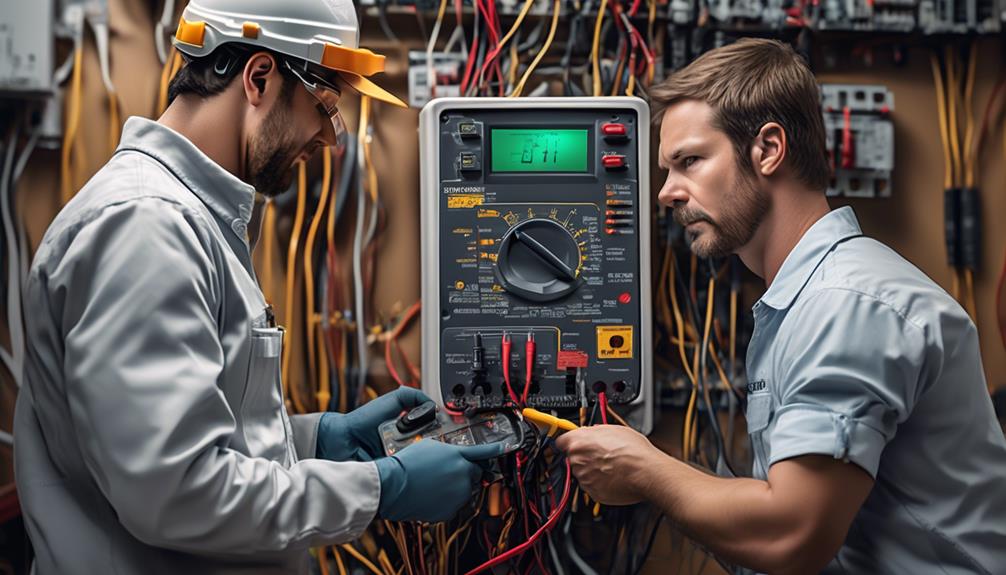
In troubleshooting low voltage issues, we can employ a systematic approach to identify and resolve electrical problems effectively. When facing voltage fluctuations, it's crucial to use precise troubleshooting techniques to pinpoint the root cause.
One effective method is to start by checking the power source and ensuring that it's functioning correctly. This involves examining the circuit breakers, fuses, and any potential issues with the utility provider.
Next, we can systematically assess the wiring and connections within the electrical system to detect any faults or loose connections. It's important to inspect the outlets, switches, and junction boxes for any signs of damage or overheating that could be contributing to the low voltage problem.
Additionally, utilizing a voltage meter can aid in measuring the voltage at different points in the system to identify where the drop occurs.
Upgrading for Voltage Optimization

We've found that upgrading the voltage in a home can bring numerous benefits, such as improved appliance performance and reduced risk of electrical damage.
However, it's important to carefully consider the costs involved in such an upgrade, as they can vary depending on the extent of the work required.
Voltage Upgrade Benefits
Optimizing voltage through an upgrade can enhance the overall performance and efficiency of a home's electrical system.
- Energy Efficiency:
Upgrading voltage can reduce energy consumption, leading to lower utility bills and a more environmentally friendly home. It allows appliances to operate more efficiently, prolonging their lifespan and reducing the overall energy demand.
- Cost Analysis:
While there's an initial cost for the upgrade, the long-term savings on energy bills and potential maintenance costs make it a worthwhile investment. It's essential to conduct a cost-benefit analysis to determine the potential savings and return on investment.
- Electrical Safety:
Higher voltage levels can ensure that electrical systems operate within optimal parameters, reducing the risk of electrical fires and equipment damage. Upgrading voltage can also improve the safety and reliability of the electrical system, providing peace of mind for homeowners.
Cost Considerations
Considering the potential long-term savings and improved efficiency, upgrading voltage for optimization is a wise investment for homeowners.
Conducting a thorough cost analysis is essential to determine the overall expenses and potential savings associated with a voltage upgrade. While the initial cost of upgrading may seem daunting, the long-term benefits, such as reduced energy consumption and lower utility bills, outweigh the upfront investment.
Energy efficiency is a key factor in the decision-making process, as optimizing voltage can lead to significant cost savings over time. The cost analysis should encompass the expenses of equipment, installation, and any potential rebates or incentives available for energy-efficient upgrades.
Conclusion and Next Steps
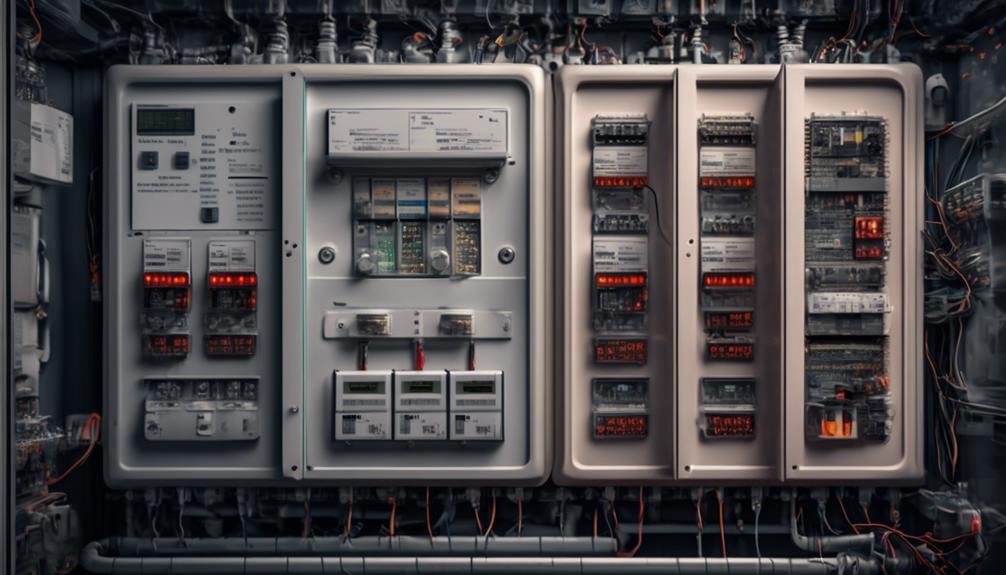
After assessing the low voltage issue, it's essential to outline the next steps to rectify the problem and ensure the safety and functionality of the home's electrical system.
First, it's crucial to adhere to voltage regulations set by the National Electrical Code (NEC) and other relevant authorities. These regulations specify the acceptable voltage levels for different electrical systems within a home, ensuring that they operate safely and efficiently. Failure to comply with these regulations can lead to potential hazards and malfunctions. Therefore, it's imperative to verify that the home's electrical system meets these standards.
Next, a comprehensive inspection by a qualified electrician is necessary to identify the root cause of the low voltage and to implement the appropriate corrective measures. This inspection should encompass all electrical components, including wiring, outlets, and circuit breakers, to pinpoint any faults or deficiencies that contribute to the low voltage problem.
Frequently Asked Questions
Can Low Voltage in a Home Affect the Performance of Electronic Devices Such as Computers and Televisions?
Low voltage in a home can definitely affect the performance of electronic devices like computers and televisions. It can lead to issues like flickering screens and slow processing. To mitigate this, voltage optimization techniques such as using voltage stabilizers or UPS systems can help maintain a consistent voltage supply to electronic devices.
It's essential to pay attention to voltage levels to ensure optimal performance and longevity of electronic equipment.
What Are the Potential Safety Hazards of Low Voltage in a Home?
Low voltage in a home can pose potential hazards like electrical fires and increased risk of shock. It's critical to understand the safety implications associated with low voltage.
When the voltage drops below a certain level, it can lead to overheating of electrical components, sparking, and potential fire outbreaks. Additionally, low voltage can cause electronic devices to malfunction and pose a risk of shock to individuals.
Understanding these risks is essential for maintaining a safe home environment.
How Can I Troubleshoot Low Voltage Issues in My Home?
When troubleshooting low voltage issues in our home, we start by checking the electrical outlet and power strip. We ensure they're securely connected and not overloaded.
Then, we inspect the circuit breaker for any tripped switches.
If everything looks good, we might consider calling a professional to examine the wiring and assess if there are any other underlying issues causing the low voltage.
Are There Any DIY Solutions for Improving Low Voltage in a Home, or Is It Best to Hire a Professional?
We can tackle low voltage issues with DIY solutions like checking for loose connections or using voltage optimization devices.
However, if the problem persists, it's best to hire a professional for electrical upgrades. It's crucial to ensure safety and compliance with regulations.
Consulting an expert ensures the issue is thoroughly addressed, avoiding potential hazards. It's always wise to seek professional help when dealing with electrical matters for a long-term, reliable solution.
What Are the Potential Costs Associated With Upgrading a Home for Voltage Optimization?
Cost analysis is essential when considering voltage optimization. Energy efficiency upgrades may include rewiring, upgrading electrical panels, and installing voltage regulators. These upgrades can range in cost depending on the size of the home and the extent of the necessary improvements.
It's important to consult with a professional to assess the specific needs of the home and provide a detailed cost estimate for the voltage optimization project.
Is it common for condos to have low voltage in the home?
Yes, low voltage is a common issue in some condos. It can be due to outdated wiring or a high demand for electricity in the building. Unlike apartments, condos are individually owned, so it’s the responsibility of the owner to address any electrical issues. Condo vs apartment explained.
Conclusion
In conclusion, understanding voltage levels is crucial for maintaining a safe and efficient electrical system in our homes.
By knowing the basics of low voltage and its impact on electrical systems, we can identify potential issues and troubleshoot effectively.
Upgrading for voltage optimization can improve the overall performance of our electrical systems.
Let's continue to educate ourselves on voltage levels and take proactive steps to ensure the safety and functionality of our home's electrical infrastructure.
- About the Author
- Latest Posts
Introducing Ron, the home decor aficionado at ByRetreat, whose passion for creating beautiful and inviting spaces is at the heart of his work. With his deep knowledge of home decor and his innate sense of style, Ron brings a wealth of expertise and a keen eye for detail to the ByRetreat team.
Ron’s love for home decor goes beyond aesthetics; he understands that our surroundings play a significant role in our overall well-being and productivity. With this in mind, Ron is dedicated to transforming remote workspaces into havens of comfort, functionality, and beauty.
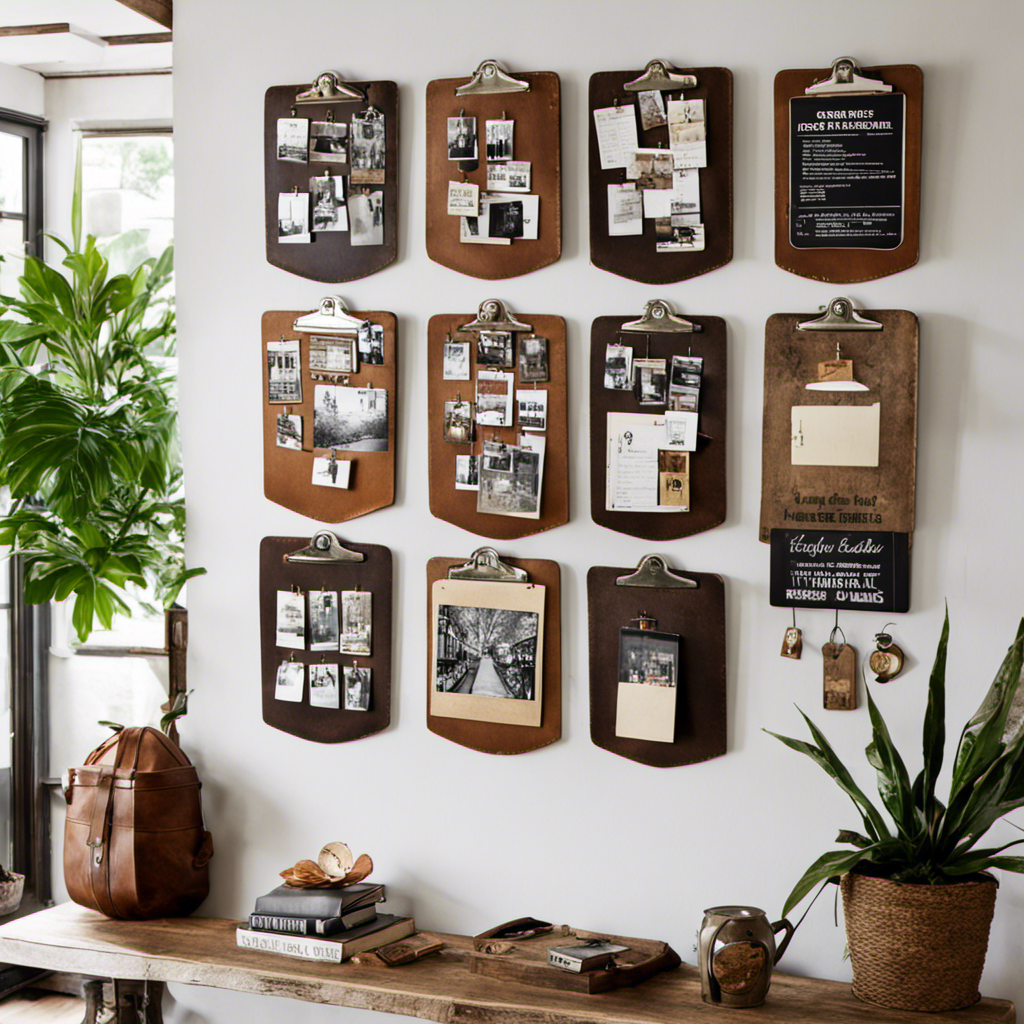
Did you realize that incorporating clipboards into your wall decorations can instantly enhance the style of any room? Translated in US English: Did you realize that incorporating clipboards into your wall decorations can instantly enhance the style of any room?
With their practicality and versatility, clipboards offer a unique and trendy way to display art, photos, or notes.
In this article, we will explore different ways to hang clipboards, providing you with creative DIY solutions and tips for styling them in your home.
Get ready to transform your walls into a personalized gallery that is both functional and visually stunning.
Key Takeaways
- Hanging clipboards as wall decor instantly elevates the style of any room.
- Select appropriate hanging hardware for secure installation and consider the overall theme and aesthetic of your home decor.
- Consider using adhesive hooks or picture hanging strips for easy installation and removal.
- Explore various ways clipboards can enhance your home decor or organizational system, such as incorporating them into office organization or using them as menu displays in restaurants.
Different Ways to Hang Clipboards as Wall Decor
You can use adhesive hooks or command strips to easily hang clipboards as wall decor. Incorporating clipboards in office organization isn’t only functional but can also add a touch of creativity to your workspace.
By hanging clipboards on the wall, you can keep important documents, to-do lists, and reminders easily accessible while also creating an aesthetically pleasing display. Additionally, clipboards can be used as photo displays, allowing you to showcase your favorite memories or inspiring images.
Simply attach photos to the clipboard using clips or magnets, and hang them on the wall. This not only adds a personal touch to your space but also allows you to easily change and update the photos whenever you want.
Choosing the Right Hanging Hardware for Clipboards
To properly display clipboards as decor, it’s important to select the appropriate hanging hardware. Proper installation techniques for hanging clipboards securely ensure that they stay in place and add a stylish touch to your home.
When choosing the right style of clipboards for your home decor, consider the overall theme and aesthetic you want to achieve. Whether you prefer a rustic, vintage look or a modern, sleek design, there are clipboards available to suit every taste.
Once you’ve selected the perfect clipboards, it’s time to choose the right hanging hardware. Look for hardware that’s durable, easy to install, and can support the weight of the clipboard. Options such as adhesive hooks, picture hanging strips, or wall-mounted hooks are ideal for hanging clipboards securely.
Remember to follow the manufacturer’s instructions for installation and use caution when handling any tools or hardware. With the proper hanging hardware and installation techniques, your clipboards will be securely displayed as stylish decor in no time.
DIY Hanging Solutions for Clipboards
When creating DIY hanging solutions for clipboards, consider using adhesive hooks or picture hanging strips for a secure and hassle-free display. These options provide a strong grip while also being easy to install and remove, making them perfect for repurposing clipboards into decorative pieces.
Adhesive hooks are versatile and can be attached to any smooth surface, such as walls or cabinets. They come in various sizes and weight capacities, ensuring that your clipboard stays securely in place.
Picture hanging strips are another great option, as they can hold heavier clipboards and provide a flush, seamless look. Simply apply the strips to the back of your clipboard and press firmly against the wall.
With these DIY hanging solutions, you can showcase your diy clipboard crafts with confidence and style.
Creative Display Ideas for Hanging Clipboards
Get creative with how you arrange and showcase your clipboards on the wall, using different sizes and orientations to create an eye-catching display.
Clipboards can be more than just functional office supplies; they can also be unique pieces of art that add personality to your home decor. Consider creating a visually appealing arrangement by combining clipboards of various sizes and orientations.
Picture this: a three-column, three-row table showcasing different clipboard styles. In the first column, you’ve a large vertical clipboard with a vibrant abstract painting. In the second column, a medium-sized horizontal clipboard displays a collection of vintage postcards. Finally, in the third column, a small square clipboard holds a mini gallery of your favorite photographs.
These unique clipboard wall displays not only serve as functional art but also allow you to easily switch out and update the contents whenever you desire.
Now, let’s explore some tips for styling clipboards in home decor.
Tips for Styling Clipboards in Home Decor
Arrange clipboards of different sizes and orientations in a visually appealing manner to create a unique and dynamic display in your home. Hang them on the wall to keep important documents within reach while adding an interesting visual element.
Incorporating clipboards into office organization adds a touch of creativity and functionality. Use larger clipboards to hold to-do lists, calendar reminders, or even inspirational quotes. Smaller clipboards can be used to display photos, notes, or memos.
Clipboards can also be repurposed as menu displays in restaurants. Attach the menu to the clipboard and hang it near the entrance or at each table. This allows for easy changes and updates to the menu, as well as adding a charming and rustic touch to the overall restaurant decor.
Get creative and explore the various ways clipboards can enhance your home decor or organizational system.
Frequently Asked Questions
Where Can I Purchase Clipboards for Wall Decor?
You can find clipboards for wall decor at various places like office supply stores, craft stores, or online retailers. They can be used creatively in home decor, and there are many DIY clipboard display ideas for wall decor.
Can Clipboards Be Hung Horizontally as Well as Vertically?
Sure! Clipboards can be hung both horizontally and vertically. This gives you endless creative possibilities for decorating with clipboards. You can display photos, artwork, to-do lists, or even a menu! Get ready to transform your space with a clipboard extravaganza!
Are There Any Specific Types of Clipboards That Work Best for Hanging as Wall Decor?
For creative ways to use clipboards as wall decor, consider DIY ideas like painting or adding fabric to customize them. Look for clipboards with sturdy hanging hooks or attach your own for easy display.
Can Clipboards Be Easily Removed From the Wall Without Causing Damage?
Removing clipboards without damage is as easy as peeling a sticker off a window. Gently lift and wiggle the clipboard to release it from the wall. Alternatively, use adhesive hooks for hassle-free hanging.
Are There Any Special Considerations for Hanging Clipboards in High Humidity Areas, Such as Bathrooms?
In high humidity areas like bathrooms, consider using alternative ways to decorate with clipboards. Try hanging clipboard alternatives like magnetic boards or adhesive hooks to display important papers without worrying about damage.
Can I Use a Clipboard to Decorate My Space?
Introducing your home decor a stylish clipboard can be a versatile and functional way to add a personal touch to any space. Whether you use it to display photos, artwork, or inspirational quotes, a well-decorated clipboard can be a unique and eye-catching addition to your home or office.
Conclusion
As you hang your clipboards as wall decor, you’ll discover a world of creativity and organization at your fingertips. The coincidental blend of functionality and aesthetics will bring a unique charm to any space.
So go ahead, choose the perfect hanging hardware, experiment with DIY solutions, and let your imagination soar as you find creative ways to display and style your clipboards.
Transform your home decor with this simple yet captivating addition.
- About the Author
- Latest Posts
Introducing Ron, the home decor aficionado at ByRetreat, whose passion for creating beautiful and inviting spaces is at the heart of his work. With his deep knowledge of home decor and his innate sense of style, Ron brings a wealth of expertise and a keen eye for detail to the ByRetreat team.
Ron’s love for home decor goes beyond aesthetics; he understands that our surroundings play a significant role in our overall well-being and productivity. With this in mind, Ron is dedicated to transforming remote workspaces into havens of comfort, functionality, and beauty.

Are you feeling bored with plain walls that lack flair and character? You’ve come to the right place! In this article, we’ll show you how to turn your bare walls into beautiful pieces of art.
Discover the secrets of choosing the perfect wall decor, utilizing shelves and display units, creating captivating gallery walls, incorporating mirrors for added depth, and adding texture with wall hangings and tapestries.
Get ready to turn your bare walls into a visual masterpiece!
Key Takeaways
- Consider the size and style of your space
- Wall murals can transform a plain wall
- Framed artwork adds elegance
- Select pieces that reflect your personal style and interests
Choosing the Right Wall Decor
You should start by considering the size and style of your space when choosing the right wall decor. Whether you want to add a touch of whimsy or create a sophisticated atmosphere, there are endless possibilities to explore.
One option is a wall mural, which can transform a plain wall into a stunning focal point. Choose a design that complements your existing furniture and color scheme, and watch as your space comes to life.
Another option is framed artwork, which adds a touch of elegance to any room. Select pieces that reflect your personal style and interests, and arrange them in a way that creates visual interest.
Utilizing Wall Shelves and Display Units
Make the most of your space by utilizing wall shelves and display units. These stylish storage solutions not only help you declutter your living area but also provide a functional display for your favorite items.
Here’s why you should consider incorporating wall shelves and display units into your home decor:
-
Showcase your personality: Display your unique collection of books, artwork, or sentimental objects to add a personal touch to your space.
-
Maximize small spaces: Wall shelves and display units are perfect for small rooms where floor space is limited. They allow you to utilize vertical space effectively.
-
Create a focal point: Arrange your items creatively on the shelves to create a stunning focal point that catches the eye of anyone entering the room.
By incorporating wall shelves and display units, you can create a stylish storage solution that adds both functionality and aesthetic appeal to your home.
Now, let’s explore how to take your wall decor to the next level by creating a gallery wall.
Creating a Gallery Wall
To create a visually captivating gallery wall, arrange a variety of framed artwork and photographs in different sizes and orientations. Start by selecting artwork that resonates with you and complements the overall aesthetic of your space. Consider themes, colors, and styles that will tie everything together.
Mix and match frames to add visual interest and dimension. Opt for different materials and finishes, such as wood, metal, or acrylic, to create contrast. Play with the arrangement by placing larger pieces in the center and gradually filling in the surrounding space with smaller pieces. Experiment with different layouts by laying out the frames on the floor before hanging them.
Once you’ve achieved the desired composition, start hanging your artwork, making sure to space them evenly and at eye level. By carefully arranging artwork and selecting frames that enhance their beauty, you can create a gallery wall that’s both visually stunning and meaningful.
Now, let’s explore how incorporating mirrors and reflective surfaces can further enhance your wall decor.
Incorporating Mirrors and Reflective Surfaces
Start by choosing mirrors and reflective surfaces that complement the overall aesthetic of your space, adding depth and dimension to your gallery wall. Mirrors are a versatile choice that not only reflect light, but also create the illusion of a larger space. Reflective surfaces, such as metallic accents, can add a touch of glamour and sophistication to your wall decor.
To evoke an emotional response in the audience, consider the following:
- Maximizing natural light: Mirrors and reflective surfaces can help bounce natural light around the room, creating a bright and airy atmosphere that uplifts the mood.
- Creating a sense of luxury: Metallic accents, like gold or silver-framed mirrors, can bring a touch of opulence and elegance to your gallery wall, making it feel like a luxurious retreat.
- Adding depth and intrigue: By strategically placing mirrors and reflective surfaces, you can create visual interest and play with perspective, drawing the viewer’s eye and sparking curiosity.
Incorporating mirrors and reflective surfaces into your gallery wall not only enhances the overall aesthetic, but also adds a touch of magic and allure to your space.
Adding Texture With Wall Hangings and Tapestries
Enhance the visual appeal of your gallery space by incorporating textured wall hangings and tapestries that add depth and interest to your overall design.
Using macrame wall hangings and exploring different types of tapestries can bring a unique touch to your empty walls. Macrame wall hangings are made by knotting various threads together, creating intricate patterns and textures. They’re versatile and can be hung in various sizes and shapes, depending on your preference.
On the other hand, tapestries offer a wide range of options, from traditional to modern designs. You can choose from vibrant colors, intricate patterns, or even opt for a more minimalistic approach. Tapestries add visual interest and a sense of warmth to any space.
Frequently Asked Questions
How Can I Ensure My Wall Decor Matches the Overall Theme of My Room?
To ensure your wall decor matches your room’s overall theme, consider incorporating plants. The natural elements will bring harmony and balance to the space. Choose decor pieces that complement the colors and style of your room for a cohesive look.
What Are Some Creative Ways to Incorporate Plants Into My Wall Decor?
To incorporate plants into your wall decor, try using hanging planters for a unique touch. You can also explore vertical garden ideas to create a stunning display that adds life and vibrancy to your space.
Can You Provide Tips on How to Arrange Different Sized Frames and Artworks on a Gallery Wall?
Arrange frames and artworks on a gallery wall like a symphony conductor, blending different frame styles harmoniously. Play with sizes, textures, and themes. Let your creativity guide you as you curate a visually captivating wall display.
What Are Some Unique Ways to Use Mirrors in Wall Decor, Other Than Just Hanging Them on the Wall?
To make a statement with mirrors, consider using them as unique and eye-catching pieces in your wall decor. Think beyond hanging them and try incorporating mirrors into furniture for a stylish and unexpected touch.
Are There Any Specific Wall Hanging or Tapestry Materials That Work Best for Different Types of Rooms or Decor Styles?
For outdoor spaces, consider using wall hanging materials like weather-resistant fabrics or metal. When choosing tapestry colors for a vibrant decor style, opt for bold and bright hues that will make a statement in your space.
How Can I Incorporate Decor to Fill Up Empty Tan Walls?
Decorating tan walls can be a bit tricky, but there are ways to fill up the empty space. Add some colorful wall art or mirrors to create visual interest. Consider incorporating shelves to display unique decor pieces. Don’t be afraid to mix and match textures and patterns to bring life to your decor with tan walls.
Conclusion
In conclusion, decorating an empty wall is like adding the final brushstroke to a masterpiece. It’s an opportunity to showcase your personal style and bring life to a blank canvas.
Whether you choose to hang shelves, create a gallery wall, incorporate mirrors, or add texture with wall hangings, each option adds depth and character to your space.
So go ahead, unleash your creativity and transform that empty wall into a captivating work of art.
- About the Author
- Latest Posts
Meet Katherine, the creative enthusiast at ByRetreat who infuses her boundless passion for design into every remote workspace she crafts. With an innate sense of creativity and an eye for unconventional beauty, Katherine brings a unique and inspiring perspective to the team.
Katherine’s love for design is infectious, and her ability to think outside the box sets her apart. She believes that true artistry lies in embracing a variety of styles and mixing them harmoniously to create captivating spaces. By combining different textures, colors, and patterns, Katherine weaves a tapestry of creativity that breathes life into each remote workspace.
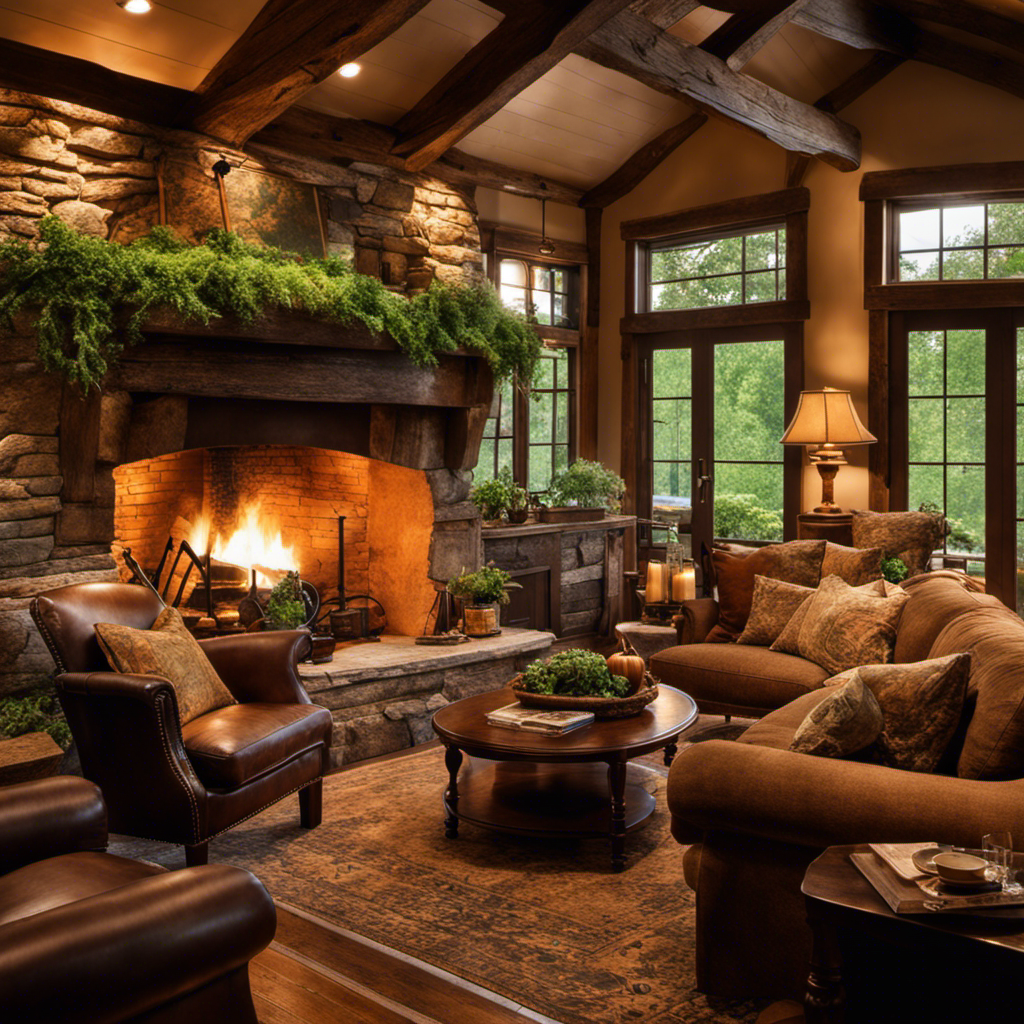
Picture entering a home that exudes a cozy sanctuary vibe, brimming with charm and whimsy. Envision being enveloped by rich hues, welcoming textures, and organic materials that add a hint of enchantment to every nook and cranny.
This is the essence of home decor like Baggen, inspired by the enchanting world of Hobbits. In this article, we will guide you on how to recreate the magic of Baggen in your own home, from choosing the right color palette to adding quirky and whimsical touches.
Get ready to transform your space into a haven of comfort and charm.
Key Takeaways
- Choose a color palette that reflects the cozy and earthy vibe of Bag End, incorporating warm base colors and pops of bold colors for contrast.
- Layer fabrics with different textures and mix and match patterns to create visual interest in your decor.
- Embrace natural elements like wood, stone, and plants to create a space that feels connected to the earth.
- Add quirky and whimsical touches through DIY projects, unique furniture pieces, and vibrant accent pieces to bring character to your space.
Choosing the Right Color Palette
You should start by selecting a color palette that reflects the cozy and earthy vibe of Bag End. To create a minimalist look inspired by the iconic home of Bilbo Baggins, consider exploring bold and vibrant colors.
Begin by choosing a base color that evokes a sense of warmth and comfort, such as a rich earth tone like deep brown or warm beige. This will serve as the foundation for your color scheme.
Next, add pops of bold colors like forest green or deep red to create visual interest and contrast. These bold hues will bring life and energy to your space, while still maintaining a cozy and earthy atmosphere.
Lastly, incorporate natural textures and materials like wood, stone, and woven textiles to enhance the overall cozy and organic aesthetic.
Incorporating Cozy Textures
To create a cozy atmosphere in your space, try incorporating soft textures like plush blankets and velvety cushions. These elements not only add visual appeal but also provide a tactile experience that invites you to relax and unwind. Here are some tips to help you incorporate cozy textures into your home decor:
-
Layering fabrics: Mix and match different textures by layering throw blankets and pillows of varying materials, such as faux fur, knits, and velvet. This adds depth and warmth to your space.
-
Mixing patterns: Don’t be afraid to mix and match patterns to create visual interest. Pairing a bold geometric pattern with a subtle floral print can create a harmonious balance in your decor.
-
Adding textured rugs: Incorporate rugs with plush textures like shag or sheepskin to add a soft and luxurious feel to your floors.
-
Using curtains and drapes: Opt for curtains or drapes made from thick, heavy fabrics like velvet or brocade. This not only adds privacy but also enhances the cozy ambiance of your space.
By incorporating these cozy textures, you’ll create a warm and inviting atmosphere in your home, perfect for curling up with a good book or enjoying a cup of tea.
In addition to cozy textures, embracing natural elements can further enhance the overall ambiance of your space.
Embracing Natural Elements
Embrace the beauty of nature by incorporating natural elements into your space, such as wooden furniture, potted plants, and stone accents. By using plants in your home decor, you can bring a sense of tranquility and freshness to any room. Not only do plants add visual appeal, but they also purify the air and create a calming atmosphere. When it comes to furniture and accessories, utilizing natural materials like wood and stone can enhance the overall aesthetic and create a warm and inviting ambiance. Imagine sitting on a comfortable wooden chair surrounded by lush greenery, with a stone accent table holding a cup of tea. It’s a perfect blend of nature and comfort, creating a space that feels connected to the earth.
| Wooden Furniture | Potted Plants | Stone Accents |
|---|---|---|
| Oak Dining Table | Fiddle Leaf Fig Tree | Marble Coasters |
| Teak Bookshelf | Snake Plant | Granite Vase |
| Walnut Coffee Table | Succulent Arrangement | Slate Candle Holder |
| Birch Nightstand | Monstera Deliciosa | Limestone Wall Art |
Incorporating these natural elements into your home decor not only adds visual interest but also brings a sense of harmony and serenity. So go ahead, embrace the beauty of nature and create a space that feels like a peaceful oasis.
Adding Quirky and Whimsical Touches
Let your space come alive with quirky and whimsical touches, adding a playful and unique charm to your home. Transform your living space into a whimsical wonderland by incorporating DIY projects and unique furniture pieces.
Here’s how you can achieve it:
-
DIY projects: Get creative and craft unique decor pieces like painted mason jars, hand-painted throw pillows, or a custom-made wall mural. These DIY projects will add a personal touch to your home and showcase your artistic side.
-
Unique furniture pieces: Look for one-of-a-kind furniture pieces that bring character to your space. Think vintage-inspired chairs, a funky coffee table, or a statement bookshelf. These unique furniture pieces will instantly become conversation starters and give your home a distinct personality.
-
Colorful accents: Add pops of color with vibrant accent pieces like bright rugs, colorful artwork, or funky lampshades. These playful accents will inject energy and liveliness into your space.
-
Whimsical details: Don’t forget the smaller details! Incorporate whimsical touches like fairy lights, quirky wall decals, or whimsical wallpaper to create a magical atmosphere in your home.
With these quirky and whimsical additions, your home will become a haven of creativity and imagination. Let your personality shine through and enjoy the delightful charm of your newly transformed space.
Creating Functional and Organized Spaces
Organize your space efficiently by utilizing storage solutions that maximize functionality and keep your belongings easily accessible.
When it comes to maximizing small spaces, incorporating multi-functional furniture is key. Think of pieces that can serve multiple purposes, such as a coffee table with hidden storage compartments, or a sofa that can be converted into a guest bed. These clever furniture options not only save space but also add versatility to your home decor.
Consider wall-mounted shelves or floating cabinets to make use of vertical space, freeing up floor area. Don’t forget about the power of organization. Invest in bins, baskets, and drawer dividers to keep everything in its place.
Frequently Asked Questions
What Are Some Tips for Finding Unique and Eccentric Home Decor Pieces to Add a Touch of Quirkiness to My Space?
Looking to add some quirkiness to your space? Try these tips for thrift shopping and DIY home decor projects. Find unique and eccentric pieces that will make your home feel like Baggend.
How Can I Create a Functional and Organized Space Without Compromising on Style?
To create a functional and stylish workspace, maximize storage in a small living space. Utilize vertical shelving, multipurpose furniture, and clever organization systems. Remember, a place for everything and everything in its place.
Are There Any Specific Natural Elements That Work Particularly Well in Creating a Baggend-Inspired Home Decor?
To create a Baggend-inspired home decor, incorporate specific natural materials like wood and stone. DIY projects such as making your own rustic furniture or creating a cozy fireplace can further enhance the whimsical charm of your space.
Can You Suggest Some Ways to Incorporate Cozy Textures Into My Home Decor Without Making It Look Cluttered?
To incorporate cozy textures into your home decor without clutter, try adding soft throw blankets and plush pillows. Opt for natural materials like wool and velvet for a warm and inviting feel.
What Are Some Common Mistakes to Avoid When Choosing a Color Palette for a Baggend-Inspired Home Decor?
When choosing a color palette for a Baggend-inspired home decor, common mistakes to avoid include using too many vibrant colors or neglecting to create a sense of warmth. The best color combinations are earthy tones with pops of rich, jewel-like hues.
Can Primitive Salt Box Decor Be Incorporated into a Baggend-themed Home Decor?
Yes, building primitive salt box decor can be seamlessly incorporated into a Baggend-themed home decor. The rustic and earthy elements of primitive salt box decor perfectly complement the cozy and whimsical feel of a Baggend-inspired home. Add some handmade wooden pieces and earth-toned textiles to complete the look.
Conclusion
So, there you’ve it – your guide to creating a home decor that would make even a hobbit feel right at home!
By choosing the right color palette, incorporating cozy textures, embracing natural elements, adding quirky touches, and creating functional spaces, you can transform your space into a Bagend-inspired haven.
So go ahead, embrace your inner hobbit and let your creativity run wild. Your home will be the envy of all Middle-earth!
- About the Author
- Latest Posts
Meet Katherine, the creative enthusiast at ByRetreat who infuses her boundless passion for design into every remote workspace she crafts. With an innate sense of creativity and an eye for unconventional beauty, Katherine brings a unique and inspiring perspective to the team.
Katherine’s love for design is infectious, and her ability to think outside the box sets her apart. She believes that true artistry lies in embracing a variety of styles and mixing them harmoniously to create captivating spaces. By combining different textures, colors, and patterns, Katherine weaves a tapestry of creativity that breathes life into each remote workspace.
-

 Decor2 weeks ago
Decor2 weeks agoMaximalist Decor Explained: Embrace More Style
-

 Vetted2 weeks ago
Vetted2 weeks ago15 Best Foot Massagers for Neuropathy to Soothe Your Feet and Relieve Discomfort
-

 Vetted3 weeks ago
Vetted3 weeks ago15 Best Sports Laundry Detergents for Keeping Your Activewear Fresh and Clean
-

 Vetted4 weeks ago
Vetted4 weeks ago15 Best Tall Toilets for Seniors That Combine Comfort and Safety
-

 Vetted4 weeks ago
Vetted4 weeks ago15 Best Dish Scrubbers to Keep Your Kitchen Sparkling Clean
-

 Vetted4 days ago
Vetted4 days ago15 Best Cleaners for Fiberglass Showers to Keep Your Bathroom Sparkling Clean
-

 Decor4 weeks ago
Decor4 weeks agoWhat Is Eclectic Home Decor
-

 Vetted1 week ago
Vetted1 week ago15 Best Organic Pest Control Solutions for a Naturally Pest-Free Home


























